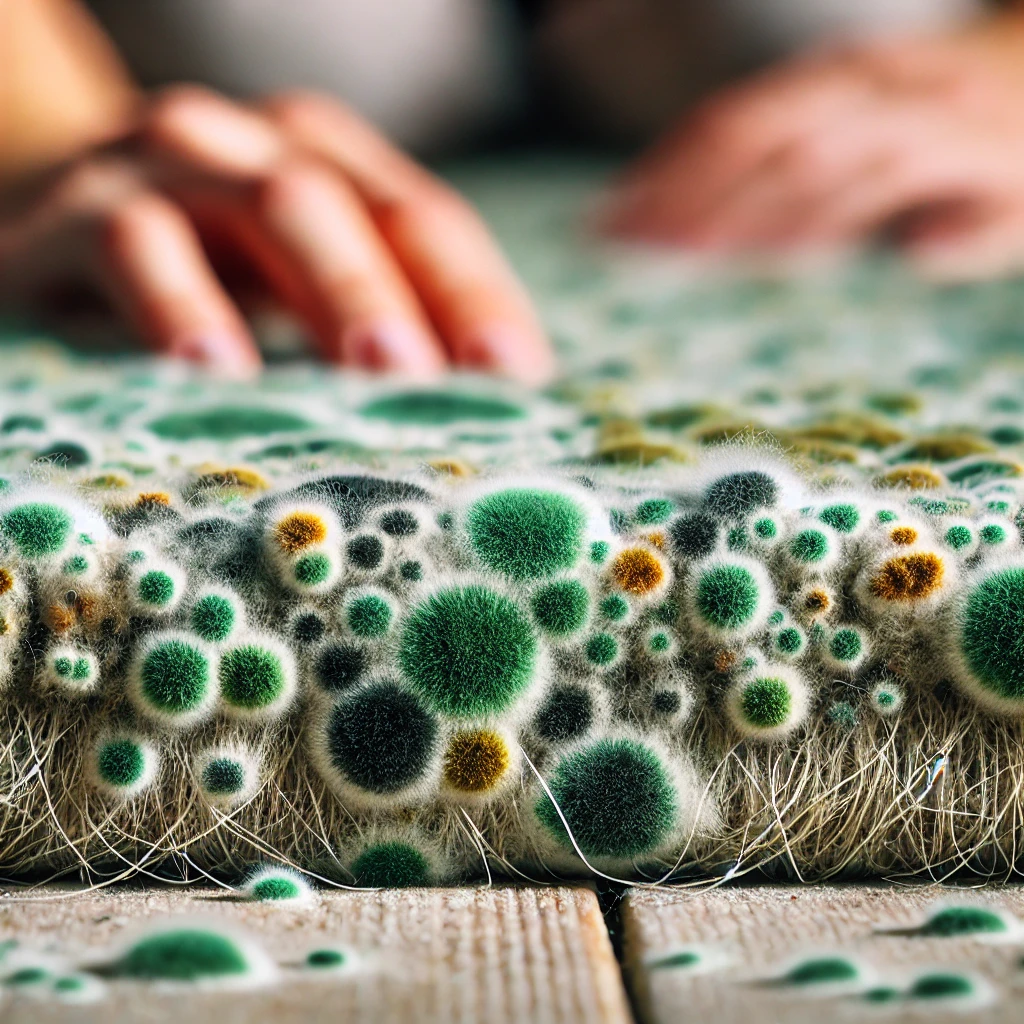Does your carpet have mould?

Improve Your Indoor Air Quality: Detect and Eliminate mould from Your Home
Maintaining a healthy home environment is crucial for the well-being of your family. One of the most overlooked threats to indoor air quality is mould, which can silently grow in your home, especially in carpets and rugs. High-humidity areas such as bathrooms and kitchens are particularly vulnerable, but any place with moisture is at risk. mould not only damages your home but also poses serious health risks, causing allergic reactions and respiratory issues. Here’s how you can identify and eliminate mould to improve your indoor air quality.
How Mould Forms in Carpets
Mould is a type of fungus that spreads through tiny spores in the air. These spores can settle and grow on surfaces that provide moisture, oxygen, and a food source, such as wet wood or decaying plant material. Carpets and area rugs often meet these conditions, making them common places for mould growth. The risk is particularly high after water damage from floods or leaks, in humid climates, or in areas with persistent dampness.
Signs You Have Mould in Your Carpets
- Musty Odor: A persistent earthy, musty smell around your carpets could indicate mould or mildew.
- Discoloration: Look for visible blotches or spots in black, green, yellow, or brown. Unexplained discoloration is a strong sign of mould.
- Persistent Dampness: Continuous moisture in your carpets creates an ideal environment for mould spores to thrive.
- Allergy Symptoms: If household members experience symptoms such as coughing, sneezing, difficulty breathing, or itchy eyes and nose, mould might be the cause.
- Positive mould Test: The most definitive way to identify mould is through professional testing.
How to Get Rid of Mould in Carpets
- Get a Professional mould Analysis: If you suspect mould, a professional test can confirm its presence and extent. This is the first step towards addressing the problem effectively.
- Remove the mould: Clean the affected areas thoroughly using strong carpet cleaners or household products like baking soda or hydrogen peroxide. Consider professional cleaning for severe cases and always use protective gear such as gloves and a respirator mask.
- Dry Out the Area: Controlling moisture is key to preventing mould. Use fans, dehumidifiers, and ensure any leaks are fixed promptly. Regular vacuuming can also help keep carpets dry and clean.
- Remove the Carpet if Necessary: For severe or persistent mould problems, replacing the carpet may be the only way to eliminate mould completely.
Preventing Mould Growth
- Regular Cleaning: Vacuum carpets frequently, especially after outdoor debris is brought inside.
- Control Moisture: Use dehumidifiers in high-humidity areas and fix any leaks immediately.
- Avoid High-Humidity Areas: Keep plush rugs out of bathrooms and kitchens.
- Monitor and Maintain: After water damage, ensure the area is thoroughly dried.
Schedule Your Mould Test Today
Protect your home and your health by ensuring your indoor air quality is free from mould. Our professional mould testing services can help you detect and address mould issues promptly and effectively. Contact us today to schedule a mould test and take the first step towards a healthier home environment.
Don’t wait until mould becomes a bigger problem. Schedule your mould test today and breathe easier tomorrow!





